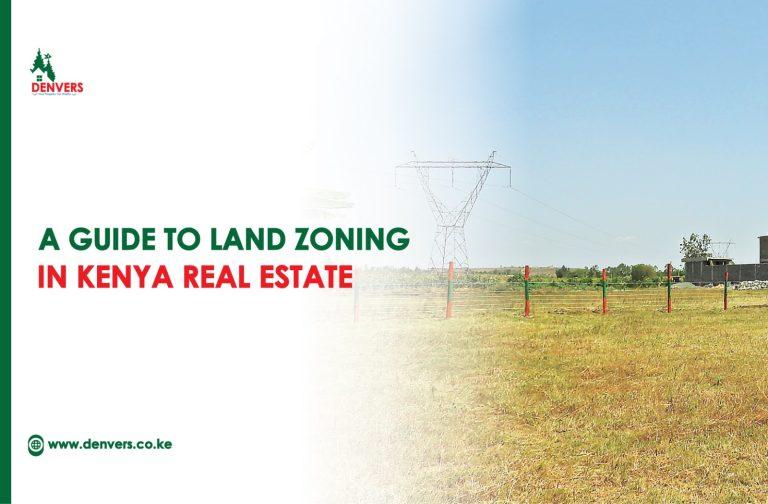Owning Land as a Chama in Kenya: A Guide
In Kenya, chamas have become a popular way for groups of individuals to pool resources and achieve shared financial goals. One common aspiration among many chamas is to own land collectively. This strategy offers numerous benefits, including financial security, community development, and investment opportunities.
Understanding Chamas
A chama is a voluntary association of people who contribute a regular amount of money to a common fund. These contributions can be used for various purposes, such as savings, loans, and investments. Chamas often operate on a rotating basis, where members receive a portion of the accumulated funds in turn.
- Shared Investment: By pooling resources, chamas can acquire land that would be unattainable for individual members.
- Financial Security: Owning land provides a tangible asset that can appreciate in value over time.
- Community Development: Collective land ownership can be used to create community projects, such as housing developments or recreational facilities.
- Investment Opportunities: Land can be leased or sold for profit, generating income for the chama.
- Enhanced Social Cohesion: Owning land together can strengthen bonds among chama members.
Steps Involved in Owning Land as a Chama

- Define Your Goals: Clearly articulate your chama’s objectives for owning land. This could include building a community center, developing a housing project, or simply investing in a valuable asset.
- Identify Suitable Land: Research and identify potential land options that align with your goals and budget. Consider factors such as location, size, and zoning regulations.
- Conduct Due Diligence: Thoroughly investigate the land to ensure it is free from encumbrances, disputes, or legal issues.
- Evaluate Financial Feasibility: Assess your chama’s financial capacity to purchase and maintain the land. Consider factors such as the purchase price, property taxes, and potential development costs.
- Create a Legal Framework: Establish a legal structure for your chama’s land ownership. This may involve forming a company, trust, or cooperative.
- Secure Financing: If necessary, explore financing options such as bank loans or mortgages.
- Purchase the Land: Once you have secured the necessary funds and legal framework, proceed with the purchase of the land.
- Land Registration: Ensure that the land is registered in the chama’s name.
- Develop a Land Use Plan: Create a plan for how the land will be used. This may involve building structures, leasing the land, or holding it for future appreciation.
- Manage and Maintain: Implement effective management practices to protect the land and maximize its value
How Do Chamas Work in Kenya?
A chama is a voluntary association of people who contribute a regular amount of money to a common fund. These contributions can be used for various purposes, including savings, loans, and investments.
- Contributions: Members contribute a predetermined amount to the chama fund at regular intervals.
- Savings: The accumulated funds can be used for savings or investments.
- Loans: Members can borrow money from the chama at agreed-upon interest rates.
- Decision-Making: Decisions about how to use the chama’s funds are typically made by a committee or through a democratic voting process.
How to Run a Successful Chama

Running a successful chama requires effective leadership, clear communication, and adherence to agreed-upon rules and regulations. Here are some key factors to consider:
- Strong Leadership: A strong and trustworthy leader can help guide the chama towards its goals.
- Clear Objectives: Establish clear objectives and goals for the chama.
- Regular Meetings: Hold regular meetings to discuss progress, make decisions, and address any issues.
- Transparent Finances: Maintain transparent financial records and ensure that all members have access to this information.
- Conflict Resolution: Develop mechanisms for resolving conflicts and disagreements among members.
- Legal Compliance: Ensure that the chama complies with all relevant laws and regulations.
What is Needed to Register a Chama in Kenya?

To register a chama in Kenya, you’ll need to provide the following information:
- Name of the Chama: A unique and appropriate name.
- Objectives: A clear statement of the chama’s objectives.
- Membership Rules: Guidelines for membership, contributions, and withdrawals.
- Management Structure: Details about the chama’s leadership and decision-making processes.
- Financial Procedures: Rules for managing the chama’s finances.
Challenges and Considerations
- Legal and Regulatory Compliance: Adhere to all relevant laws and regulations governing land ownership and chamas.
- Internal Disputes: Address potential conflicts among chama members regarding land use, decision-making, and financial matters.
- Financial Risks: Land values can fluctuate, and there may be unexpected costs associated with land ownership and development.
- Community Relations: If you plan to develop the land, build positive relationships with the local community.
Conclusion
Owning land as a chama in Kenya can be a rewarding and empowering experience. By working together and adhering to sound financial principles, chamas can achieve their land ownership goals and reap the benefits of collective investment.








